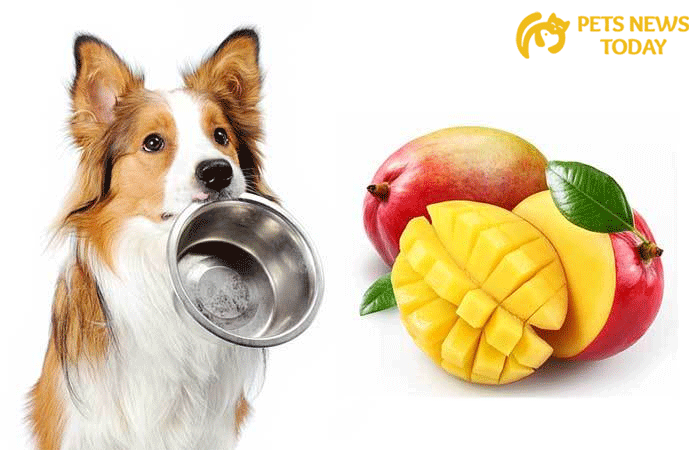Can Dogs Eat Mango? – What Every Pet Owner Should Know

When it comes to sharing fruits with our canine companions, many pet owners are understandably cautious about what is safe for their dogs to consume. Mango is a delicious and nutritious fruit that is popular among humans, but can dogs eat mango? In this article, we will explore whether mango is safe for dogs, the benefits and risks of feeding mango to your dog, and how to serve it if you choose to include it in your dog’s diet.
Is Mango Safe for Dogs?

Yes, dogs can eat mango in moderation. Mango is a safe fruit for dogs as long as you take a few precautions. It is important to remember that while mango is safe, it should be given as an occasional treat and not as a regular part of your dog’s diet. Always consult with your veterinarian before introducing new foods to your dog’s diet, especially if your dog has any health conditions.
Nutritional Benefits of Mango for Dogs
Mango is a tropical fruit that offers several nutritional benefits to dogs. Here are some of the key nutrients found in mango:
- Vitamins: Mango is rich in vitamins A, C, E, and K, which contribute to your dog’s overall health. Vitamin A supports eye health, while vitamin C boosts the immune system.
- Fiber: Mango contains dietary fiber, which can aid in digestion and help maintain a healthy weight.
- Antioxidants: Mango is packed with antioxidants that can help combat oxidative stress and reduce the risk of chronic diseases.
- Potassium: Mango is a good source of potassium, which helps regulate blood pressure and supports heart health.
Potential Risks of Feeding Mango to Dogs
While mango can offer health benefits to dogs, there are some potential risks to be aware of:
- High Sugar Content: Mango is naturally high in sugar, which can lead to weight gain and other health issues if fed in excess.
- Pit and Skin: The mango pit contains cyanide, which is toxic to dogs and can pose a choking hazard. The skin can also be difficult for dogs to digest.
- Allergic Reactions: Some dogs may be allergic to mango, resulting in gastrointestinal upset or skin irritations.
How to Safely Feed Your Dogs Eat Mango

If you decide to offer mango as a treat for your dog, follow these guidelines to ensure their safety:
- Peel the Mango: Remove the skin to prevent digestive issues.
- Remove the Pit: Carefully remove the pit to avoid choking hazards and potential toxicity.
- Cut into Small Pieces: Slice the mango flesh into small, manageable pieces to make it easier for your dog to eat.
- Moderation is Key: Offer mango as an occasional treat, and do not overdo it. Too much mango can lead to digestive upset or obesity.
Signs of Mango Allergy in Dogs
While rare, some dogs may be allergic to mango. Watch out for the following signs of an allergic reaction:
- Vomiting
- Diarrhea
- Itching or redness of the skin
- Swelling of the face, lips, or tongue
- Difficulty breathing
If you notice any of these symptoms after feeding your dog mango, discontinue feeding it immediately and consult your veterinarian.
In conclusion, mango is a safe fruit for dogs to enjoy in moderation. It offers several nutritional benefits, such as vitamins, fiber, antioxidants, and potassium. However, the high sugar content means that it should be given sparingly and as part of a balanced diet.
Always remember to peel the mango, remove the pit, and cut the flesh into small pieces before serving it to your dog. If you have any concerns or notice any signs of an allergic reaction, consult your veterinarian. By following these guidelines, you can safely share the sweet and juicy taste of mango with your furry friend while prioritizing their health and well-being.



